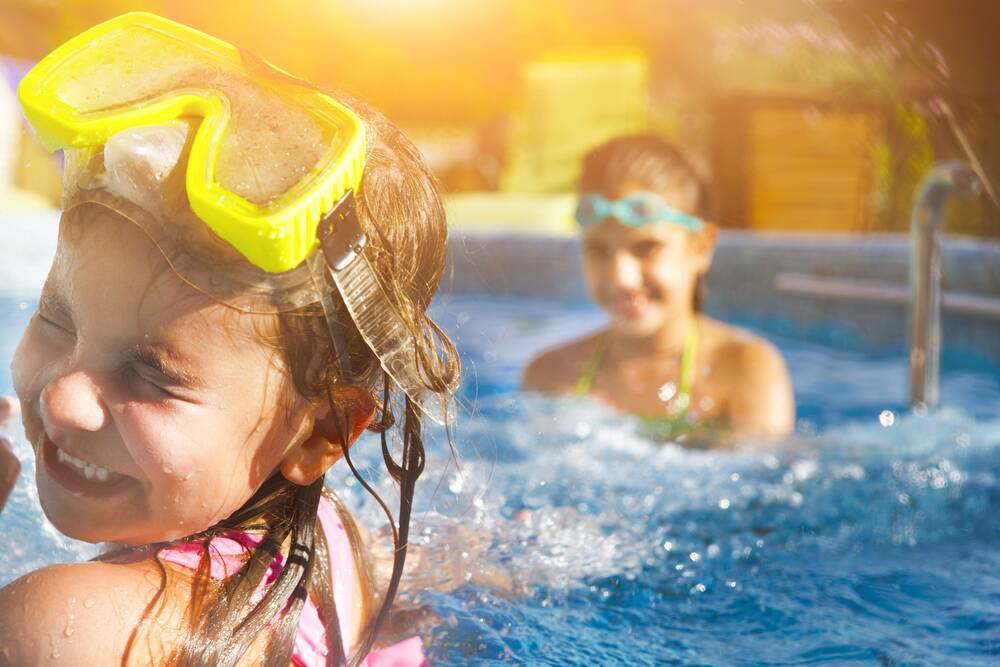Pool safety rules in Australia: What you need to know

This is branded content.
Every year, countless accidents occur in pools and other bodies of water. Many of these accidents could have been prevented with proper safety measures. That's why it's so important to be aware of pool safety rules.
By following a few simple guidelines, you can help ensure that everyone stays safe while enjoying the water.
First and foremost, never swim alone. There should always be someone else present in case of an emergency.
Secondly, make sure that the area around the pool is free of tripping hazards. This includes toys, lawn chairs, and towels.
Third, never dive into a pool unless you know that it is deep enough to do so safely. Finally, be sure to keep a close eye on children at all times. Unfortunately, children are particularly vulnerable to pool accidents.
By following these basic safety rules, you can help make sure that everyone stays safe while enjoying the water.
Pool fencing rules
When it comes to installing a pool fence, it's important to always get professional help. While some home improvement projects can be successfully completed by DIY enthusiasts, pool fencing is not one of them.
There are a number of reasons why professional pool fencing is essential. First, pool fences must meet stringent safety standards.
In Australia, all pools must be fully enclosed by a barrier that is at least 1200mm in height. Barriers can include fencing or walls.
The bottom of the pool fence and gate must be no more than 100mm off the ground. If the horizontal rails are 900mm or more apart, the verticals cannot exceed 100mm apart.
If the horizontals are less than 900mm apart, the verticals must be no more than 10mm wide. These regulations are in place to help prevent drowning accidents, especially among young children.
By ensuring that pool fences meet these requirements, we can help to create a safer environment for all.
A professional installer will ensure that your fence meets all local building codes and safety requirements. Second, professional installers have the experience and expertise necessary to properly secure the fence to your pool deck.
This is important in preventing the fence from being dislodged by wind or water. Finally, a professional installer can provide you with a warranty on their work, giving you peace of mind in knowing that your pool fence is built to last.
The Australian rules about pool gates
The Australian government has very specific regulations regarding pool gates.
First, the gate must always open away from the pool. This is to prevent children from accidentally running into the pool area.
Second, the gate must be self-closing and self-latching. This is to ensure that the gate is always closed when not in use.
Finally, the gate latch must be located at least 1500mm above the ground and at least 1400mm above the top part of the horizontal railings.
Alternatively, the gate latch can be located on the inside of the fence. This is to prevent children from reaching the latch and opening the gate.
By following these guidelines, you can help keep your pool safe for everyone to enjoy.
Objects around the pool
The Australian Standard for pool fences stipulates that all climbable objects must be at least 900mm away from the fence on the outside, and that all non-climbable objects must not be within 300mm of the fence on the inside.
This ensures that there are no footholds or handholds that could be used to climb over the fence, and that there is no way for a child to squeeze through any gaps.
By following these simple guidelines, you can help to keep your family safe and prevent accidents.
Signage
CPR signs are essential for any pool area. They provide critical information that can help save a life in the event of an emergency. The sign should be legible from at least three metres away, and it should be placed in a prominent location.
Ideally, the sign should be placed near the pool entry so that it can be easily seen by everyone who enters the area.
In addition, the sign should be made of durable material that can withstand the elements. PVC or polypropylene are both good options.
Finally, the sign should be brightly coloured so that it is easily visible. By following these guidelines, you can help ensure that your pool area is safe for everyone.
Construction
According to most pool safety codes, you cannot have a door that leads directly from the house to the pool area. This is to prevent young children from gaining unsupervised access to the pool.
In addition, any windows that are located around the pool must be either be Locked or able to open no more than 100mm (except in Victoria where the limit is 125mm).
This is to prevent small children from climbing through and getting into the pool area. Finally, all doors and windows that lead to the pool area must have screens installed.
This is to keep insects and other pests out of the pool area, as well as to provide an additional layer of protection against unsupervised entry. By following these simple safety guidelines, you can help to keep your family safe and prevent tragedies from occurring.
Every year, thousands of people are injured in pool-related accidents. In fact, pools are one of the leading causes of accidental death for children under the age of five.
While pools can be a great source of fun and exercise, it is important to always practice safety. By following these simple tips, you can help to keep yourself and your loved ones safe around pools.


